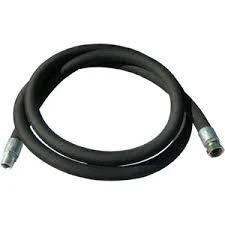slip joint pipe coupling
Understanding Slip Joint Pipe Couplings An Essential Component in Plumbing Systems
In the realm of plumbing and piping systems, a variety of components work harmoniously to ensure that water and other fluids flow seamlessly. One such critical component is the slip joint pipe coupling. This type of coupling is widely used in residential and commercial plumbing, and understanding its design and function can greatly enhance your plumbing knowledge.
What is a Slip Joint Pipe Coupling?
A slip joint pipe coupling is a mechanical device that connects two pipes together, allowing for a certain degree of flexibility and movement. The primary function of this coupling is to accommodate variations in the length of pipes, which can change due to thermal expansion, contraction, or vibrations. Unlike rigid couplings, which provide a permanent connection, slip joint couplings allow for adjustments and facilitate easier assembly and disassembly.
Design and Components
A standard slip joint coupling typically comprises two main parts the coupling itself and a sealing component, which is usually a rubber gasket or o-ring. The design allows one pipe to slip into the other, creating an effective seal at the joining point. This arrangement not only ensures a tight fit but also allows for easy adjustments if the piping needs to be repositioned or resized.
One of the significant advantages of using a slip joint coupling is its simplicity of installation. Both DIY enthusiasts and professional plumbers appreciate that it does not require specialized tools. The coupling can be installed using basic tools and techniques, making it an accessible option for various plumbing applications.
Applications of Slip Joint Pipe Couplings
Slip joint couplings are commonly used in various plumbing applications, including
1. Drainage Systems In sink and shower drains, slip joint couplings are used to connect drain pipes while allowing for slight movement caused by water flow and temperature changes.
slip joint pipe coupling

2. Waste and Vent Systems These couplings provide solutions in waste and vent systems, helping to create a user-friendly assembly process that can easily accommodate maintenance and repairs.
3. Heating and Cooling Systems Slip joint couplings are also prevalent in heating and cooling systems, where they allow for the expansion and contraction of pipes without risking damage or leaks.
Advantages of Slip Joint Pipe Couplings
The use of slip joint pipe couplings comes with numerous advantages
- Flexibility The ability to accommodate movement makes them ideal for use in environments subject to temperature variations and vibrations.
- Ease of Installation Their straightforward assembly process saves time and labor costs, making them valuable in both professional and DIY plumbing work.
- Maintenance-Friendly In case of repairs or replacements, slip joint couplings allow for easy disassembly, which is crucial in maintaining plumbing systems.
Conclusion
Slip joint pipe couplings play an indispensable role in plumbing systems, promoting both functionality and ease of installation. Their unique design accommodates flexibility, making them suitable for a variety of applications, from residential bathrooms to commercial installations. As plumbing technology continues to evolve, the importance of understanding components like slip joint couplings remains vital for anyone involved in the field. Whether you're a homeowner, a DIY enthusiast, or a professional plumber, recognizing the benefits and applications of slip joint pipe couplings can significantly enhance your plumbing project outcomes. As you navigate your plumbing endeavors, consider the slip joint coupling as an essential tool in your toolkit for ensuring efficient and effective fluid transport.
-
Reliable Brake Line Solutions for Your VehicleNewsJun.05,2025
-
Quick Fix for Leaky Air Conditioning HosesNewsJun.05,2025
-
Powerful Sewer Jetting Solutions for Tough ClogsNewsJun.05,2025
-
Power Steering Hose Problems SolvedNewsJun.05,2025
-
Hose Protectors That Actually WorkNewsJun.05,2025
-
Essential Hose Connectors for Every HomeNewsJun.05,2025

